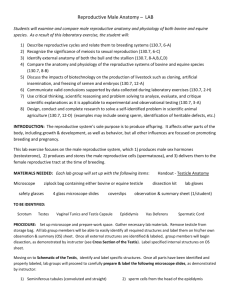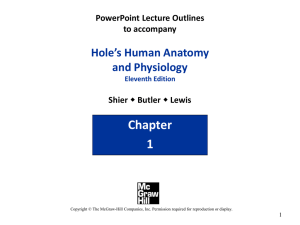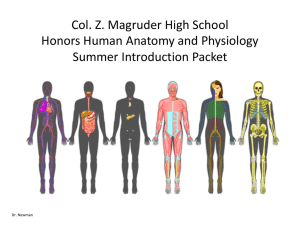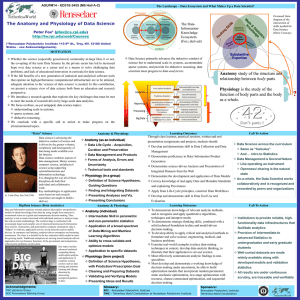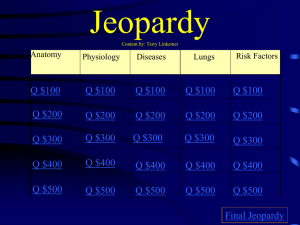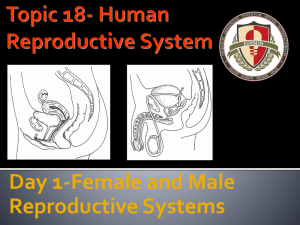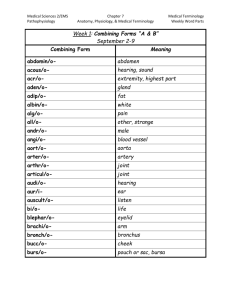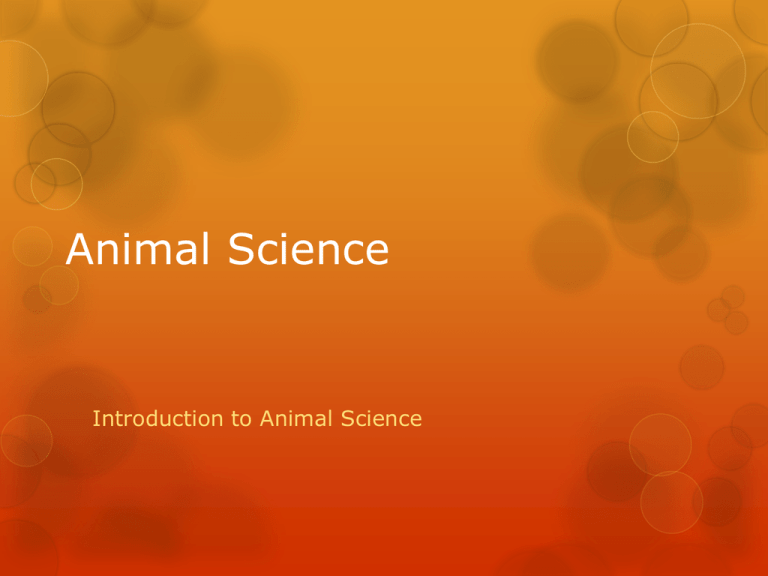
Animal Science
Introduction to Animal Science
What is Animal Science?
Care, management and production of
domestic animals
Animals used for food, clothing & tools
What was the first domesticated animal?
Dog for tracking, then herding
Domestication
After animals become domesticated, they
become dependent on man
Most can’t survive in wild
Most poultry can’t fly
Sheep don’t shed wool
Cows produce 20,000 lbs milk / year
Birds produce 250 eggs / yr. (20 in wild)
Animal Use as Food
Meat - (muscle tissue) Beef, Pork, Lamb,
Goat, Poultry
Most efficient way to get protein
Only way to harvest some natural
resources like grass
Milk - inexpensive source of protein
Cheese, ice cream, yogurt
Eggs - pastries, mayonnaise, custards
Animal Use as By-Products
Bones - buttons, glue, mineral supplement for
livestock feed (Calcium)
Fat - chemicals, salves, creams, dressings,
lubricants, soaps, food
Glands - medicines, food additives
Collagen - (connective tissue in joints) glue &
gelatin
Intestinal & Stomach tissue - lunch meats, surgical
sutures, strings for musical & sports instruments
(contents = fertilizer)
Animals Use as Work
Cultivate land
Transportation
Control other animals
Assist physically & mentally
handicapped
Rehabilitation of disabled
Other Animal Use
Hides - leather
Hair - wool, mohair, fiber
Lab Animals - mice, rats, guinea pigs etc.
Pets
What is the future of Animal
Science?
Embryo Transplant - can produce 20
calves from one cow per year
Cloning - using an animal cell to grow an
identical duplicate animal
Animal “Pharming” – producing animals to
produce drugs and chemicals
Terminology of Animal Science
Cow- a female bovine that has had offspring
Bull- a male bovine capable of reproducing
Heifer- a young female bovine that has not
had offspring
Steer- a castrated male bovine
Calf- a young bovine (less than 30 mo)
Calve- the act of giving birth to a calf
Terminology of Animal Science
Wean- to remove a young animal from it’s
mother
Colostrum- nutrient rich milk from the mother
following birth
Lactation- the period when a female produces
milk after a birth
Freshen- when a female produces milk prior to
giving birth
Cull- the act of removing unproductive animals
from a group
Terminology of Animal Science
Sow- a female hog that has given birth
Boar- a male hog capable of breeding
Gilt- a young female porcine
Barrow- a young male porcine
Piglets- very young porcine
Farrow- the act of giving birth to piglets
Litter- a group of piglets born at one time
Terminology of Animal Science
Ewe- a female sheep that has lambed
Ram- a male sheep also known as buck
Ewe lamb- a young female ovine
Whether- a castrated male ovine
Lamb- a young ovine
Lambing- the act of giving birth to lambs
Dock- the act of removing the tail of a
young lamb
Terminology of Animal Science
Mutton- the meat of sheep animals
Shearing- the act of removing wool or
mohair from an animal
Wool- natural fiber produced by ovines
Mohair- a less textured hair usually
harvested from goats for fiber
Cashmere- a valuable hair from cashmere
goats
Terminology of Animal Science
Doe- a female goat that has reproduced,
also called a nanny
Buck- a male goat capable of reproducing
Kid- a young caprine
Kidding- the act of giving birth to young
caprine
Chevon- a goat grown for meat
Terminology of Animal Science
Mare- an adult female horse
Stallion- a male horse capable of
reproducing also called a stud
Gelding- a castrated male equine
Foal- a young equine
Colt- a young male equine
Filly- a young female equine
Draft- a horse produced for work
Terminology of Animal Science
Hen- a female chicken
Rooster- a male chicken also known as a
cock
Capon- a castrated male rooster
Clutch- a set of eggs being hatched
Molt- the act of losing feathers
Layers- poultry used to produce eggs
Fryers- poultry used for meat
Terminology of Animal Science
Pedigree- tracking the ancestors of an
animal
Breed- a variety of animal with specific
traits
Breed Association- a group of producers
that ensure breed traits
Commodity Group- a group of producers
producing a similar product
Anatomy and Physiology
Skeletal System
Made of bone and cartilage
Gives the animal structure and
flexibility
Protects the organs of the animal
Joints use tendons and ligaments
Marrow in bones produces red blood
cells
Types of Bones
FLAT
Irregular
Anatomy and Physiology
Muscular System
Provides movement for animal and supports
life
Keeps blood flowing and cells living
Helps with digestion of food
Provides a proteins source for humans
Voluntary and involuntary, smooth and
striated, and red and white
Anatomy and Physiology
Circulatory System
Heart and blood vessels
Arteries and Veins
Provides oxygen and nutrients to each
individual cell
Removes wastes from the cells
DID YOU KNOW….
A Blue Whale’s heart is the same size as a VW Bug??
Anatomy and Physiology
Respiratory System
Consists of lungs and airways
Provides necessary oxygen to
bloodstream
Removes carbon dioxide from the
bloodstream
Anatomy and Physiology
Nervous and Endocrine Systems
Nervous system is brain, spinal cord,
nerves and nerve endings
Endocrine system is series of glands
that secrete hormones
Hormones have chemical effect on body
organs
Anatomy and Physiology
Digestive System
Provides the bloodstream with
necessary nutrients to deliver to cells
Breaks food into basic nutrients to be
used by the body
Removes unneeded products
Can be simple (monogastric) or
ruminant (polygastric)
Anatomy and Physiology
Digestive System- Simple
Human, Pig, Dog, Horse, Birds
Animal ingests food
Food is chemically broken down into
elements by acid in the stomach
Elements are absorbed by intestines
Waste is excreted
Anatomy and Physiology
Digestive System- Ruminant
Cow, Sheep, Goats, Deer
Animal ingests food
Rumen ferments cellulosic fiber
Reticulum filters contents
Omasum extracts water in layers
Abomasum is true stomach where
chemical breakdown takes place
Anatomy and Physiology
Reproductive System
Ovaries and testes produce cells
Female cells are called eggs or ovum
Male cells are called sperm
Animals mate and cells are combined
Each sex cell contributes one half of offspring’s DNA
Pregnancy- carrying a fetus
Fertilization-the union of the egg and sperm nuclei
Conception- Occurrence of fertilization
Ovulation- Release of an ovule from the female
Gestation- The time from fertilization or conception of a
female until she gives birth
Female Reproductive System
Vulva: Exterior portion of reproductive tract, and
opening of reproductive tract, provides visual signs of
heat.
Vagina: Between vulva and cervix, channel for birth and
copulation (cows and ewes, semen is deposited here)
Cervix: “Mouth of the womb,” Divides vagina and uterus
and is opening into uterus. (Mares and sows, semen is
deposited here). At birth, cervix stretches to allow baby
to pass. During pregnancy, cervix become blocked with a
mucous plug to prevent infection.
Uterus: Provides nourishment for fetus
Horns of Uterus: Two branches of uterus. Where fetus
grows
Fallopian Tube: Where fertilization occurs, lined with cilia
which aid in egg migration.
Ovaries: Houses all eggs, possess large number of eggs
in all stages of development. Produces hormones
Male Reproductive System
Testes: Produce sperm and testosterone
Epididymis: Tube connects to testes, collects and stores
sperm
Vas Deferens: Tube connects to epididymus, transports
sperm
Penis: Places sperm in female
Sperm: Male Reproductive Cell
Semen: Fluid that carries sperm
Scrotum: Protects testes and maintains temperature
Sheath: Opening of reproductive tract.
Urethra - begins at bladder and continues through penis
Sigmoid Flexure - "S" shape in urethra allows for
extension of penis outside of body for reproduction
Cowpers Gland, Prostate Gland, Seminal Vesicle:
Produce Semen and provide medium for transporting
sperm, adds volume, provides nutrients, cleans and
flushes urinary tract
Animal Reproduction
Estrous Cycle
The cycle of a female producing eggs
Can be monoestrous or polyestrous
Artificial Insemination
Placing sperm from male into female
Embryo Transfer
Fertilizing many eggs from one female and
placing them in host females
Animal Reproduction
Pure Breeding
Breeding specific breeds to the same
Usually registered with an association
Cross Breeding
Mixing breeds for desirable traits
Grading Up
Breeding purebreds to commercial
animals to increase value of offspring

